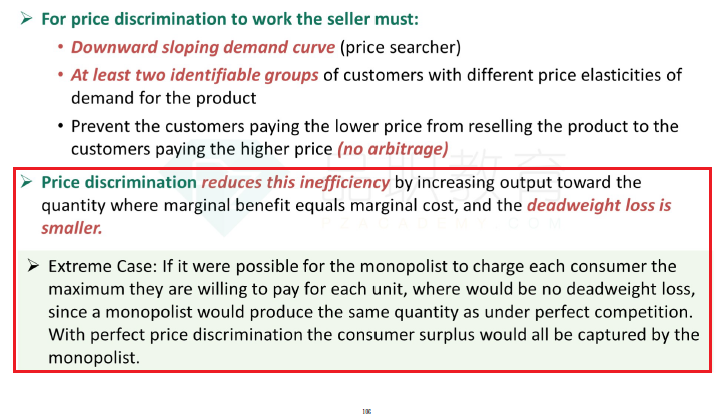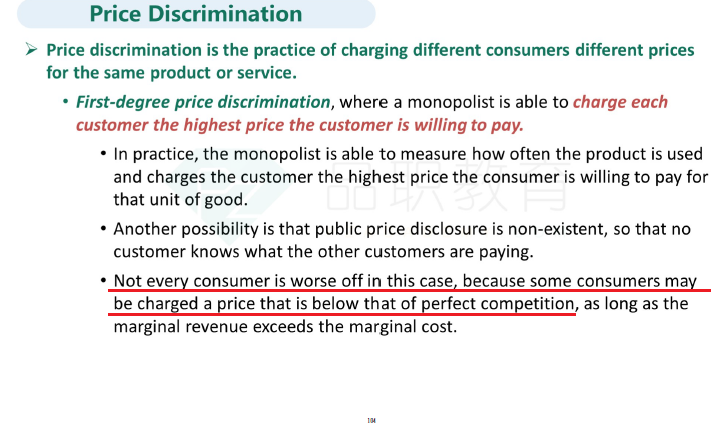NO.PZ2022071403000030
问题如下:
Question
Which of the following is the least likely outcome when a monopolist adopts first-degree price discrimination because of customers’ differing demand elasticities?
选项:
A.The output increases to the point at which price equals the marginal cost. B.The monopolist shares the total surplus with consumers. C.The price for a marginal unit decreases to less than the price for other units.解释:
SolutionB is correct. In a monopoly, perfect price discrimination results in the total surplus being kept by the producer, the monopolist.
C is incorrect. When a monopolist adopts perfect price discrimination, the price for the marginal unit will be lower than average price.
A is incorrect. Under perfect price discrimination, output increases to the point where price equals marginal cost.
A和C的结论分别都是怎么得出来的?





